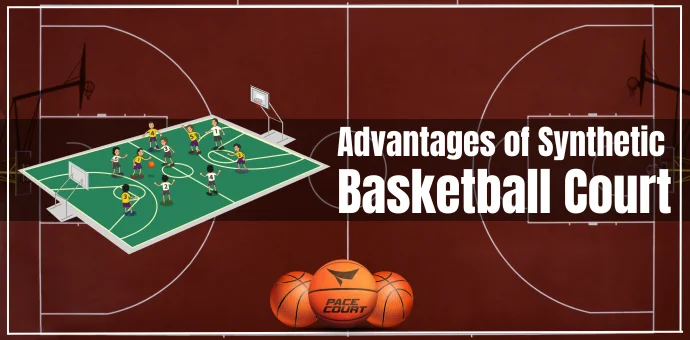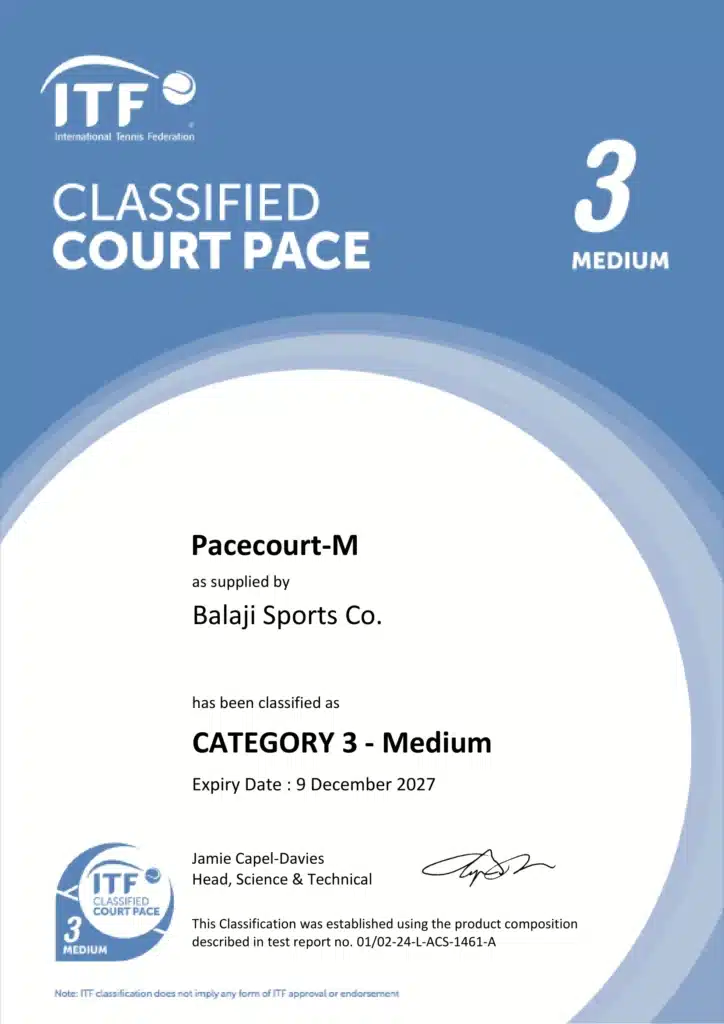Why Acrylic is the Perfect Material for Walking Track Surfaces
Introduction A vital component of exercise regimens and leisure pursuits is walking routes. They are a necessary part of any community focused on health and wellness, whether they are found in parks, recreation facilities, or sports complexes. These tracks’ longevity, performance, and safety are all influenced by the kind of material that went into their creation. These reasons have made acrylic flooring one of the greatest materials for walking track. Beyond just serving the functional needs, its benefits make it a complete solution with a long service life and minimal maintenance requirements. This comprehensive guide examines the benefits of acrylic as the best material for walking track surfaces and provides assembly instructions, case studies, and an overview of its advantages. If your team is responsible for building or maintaining outdoor sports courts or pathways, you want to think about using acrylic flooring for your next project. What is Acrylic Flooring? Heavy foot traffic is permitted because the top layer of acrylic flooring, which is designed to be resilient and moisture-resistant, shields the substrate layer. Its remarkable properties have made it extremely popular for use in construction and building, especially in the creation of sports courts. Acrylic is a polymer composed of several distinct polymers that have been subtly altered to improve their resilience while maintaining their softness and stickiness in various conditions. Key Benefits of Acrylic Flooring for Walking Tracks Durability and Longevity Acrylic flooring is more durable than many other materials. This is particularly crucial for walking track trails since they are often used, subject to inclement weather, and under stress. Acrylic surfaces resist degradation from harsh weather conditions, such as intense rain, searing sun, or extremely high temperatures, unlike degradable materials like grass or gravel. When acrylic is applied, it forms a sealant that sticks to the surfaces, avoiding wear and tear and cracks, particularly in materials that are not meant for heavy usage. Slip Resistance Safety is the most important factor to take into account when selecting a material for a walking track. Acrylic gives a non-slip surface, allowing people to walk or jog freely, even after the rain. This resistance is especially crucial in public spaces where visitors may be discouraged by concerns about their safety. Weather Resistance Walking paths outside are weather-dependent. Elements that aren’t meant to withstand bad weather, such as intense UV radiation, torrential rain, or extremely freezing temperatures, can get destroyed. In contrast to all other outside flooring materials, acrylic, on the other hand, is outstanding in becoming damaged from the effects of weather. While its water-resistant quality ensures that there won’t be any swelling or cracking in the surface even during the rainy season, its UV resistance ensures that the surface won’t yellow or deteriorate due to sunshine exposure. Additionally resistant to temperature changes, acrylic materials function properly when glued and molded in both extremely hot and extremely cold environments. Low Maintenance Most of the time, facility managers are focused on the expenses and labor involved in maintenance. Continuous repairs, repaving, or reseeding are constantly needed for asphalt or natural surfaces; this contributes to the overall costs incurred over time. The amount of upkeep required is greatly reduced with acrylic floors. Over time, replacement costs will be lower when an acrylic walking track is constructed since it will require less cleaning and repair. An acrylic track surface that is cleaned regularly will stay in good condition for longer and only require little surface touch-ups. This explains why, because of the heavy traffic, acrylic is favored in most public spaces where maintenance work is rarely done. Enhanced Aesthetic Appeal There is a variety of colors, patterns, and textures possible on the acrylic surface. This means that walking tracks can be designed and constructed to correspond with the visual image of a park, community center, or any recreational venue. The colors can either be camouflaged with the environment or so striking that amenities such as a walking track can become a focal point. The fact that acrylic can hold bright colors for an extended period without getting dull makes it even more attractive for people who want to create something that will last and make an aesthetic contribution. Sustainability With the changing environment, sustainability has become one of the paramount issues for municipalities and institutions in charge of public places. Moreover, acrylic surfaces can include eco-friendly components such as reclaimed products and do not release toxic fumes. Additionally, these surfaces are long-lasting and do not wear out quickly. Hence they are disposed of in waste after quite some time. Many companies nowadays, for example Pacecourt, provide eco-friendly acrylic flooring systems creating guilt-free options for environmentalists. The Installation Process of Acrylic Flooring for Walking Tracks To create a smooth, long-lasting, and resilient surface, installing acrylic flooring for walking tracks requires completing a few essential tasks. The following chapters walk through the fundamentals of placing the material in a specific order and demonstrate. How simple it is to upgrade a track from a conventional surface to a more sophisticated one. Surface Preparation It’s also crucial to remember that enough sub-base preparation is required before applying acrylic. Put another way, the surfaces—whether they be made of concrete, asphalt, or even an existing walking track material—must be spotless, level, and devoid of waste materials and fissures. If there are any cracks, though, these must be closed up to enable the acrylic to be applied evenly. Applying the Acrylic Layers Acrylic surface systems consist of discrete layers, each of which has a specific purpose. The first layer is a priming coat that helps the material adhere to the treated underlying surface by improving its mobility and adherence. After that, multiple layers made of an acrylic mixture are applied. The walking tracks’ high friction and long-lasting surface finish are created by these layers. Adding Color and Texture Following the establishment of the foundational layers, the next stage involves adding surface texture and coloring. Different color schemes and surface finishes may be chosen to improve the facility’s appearance and







